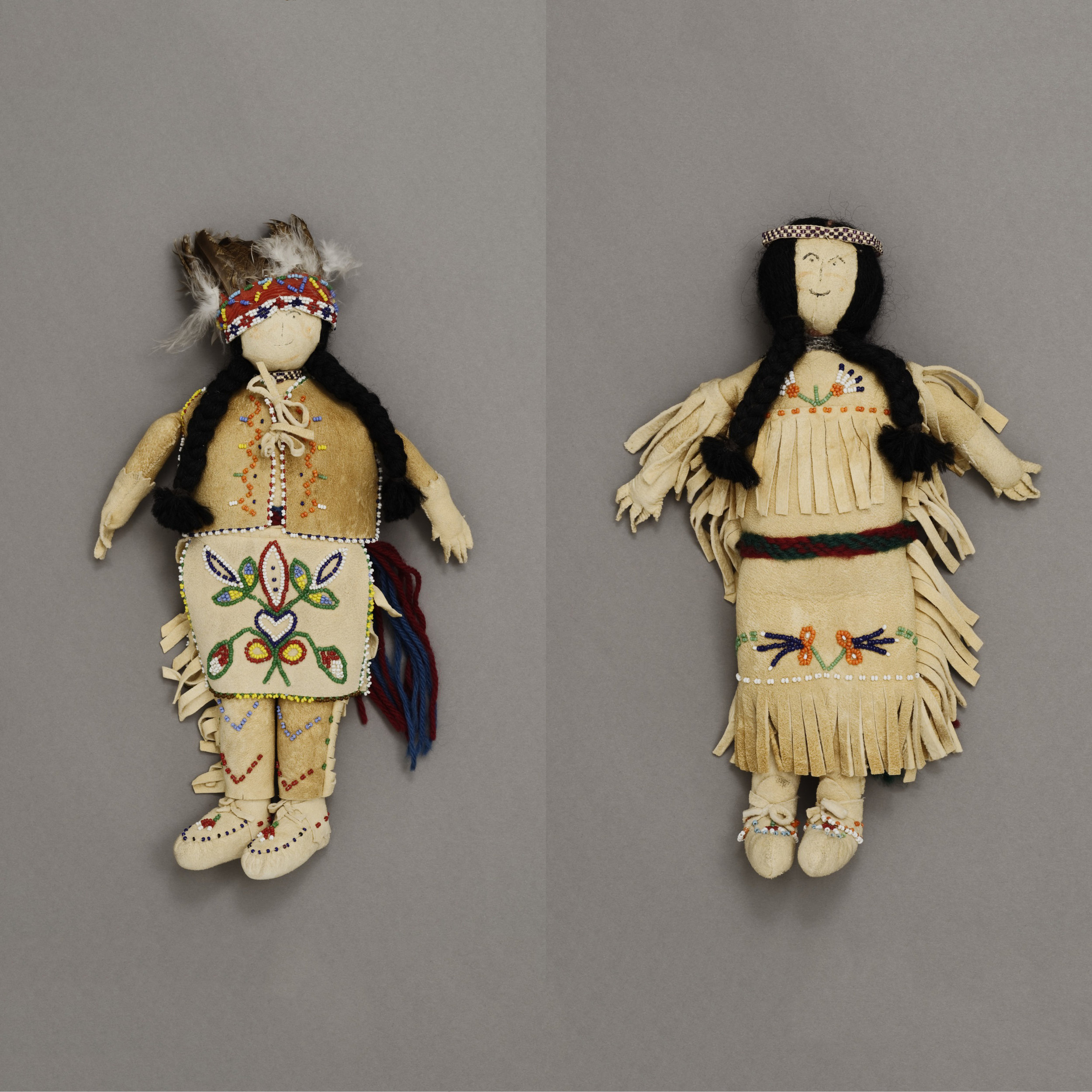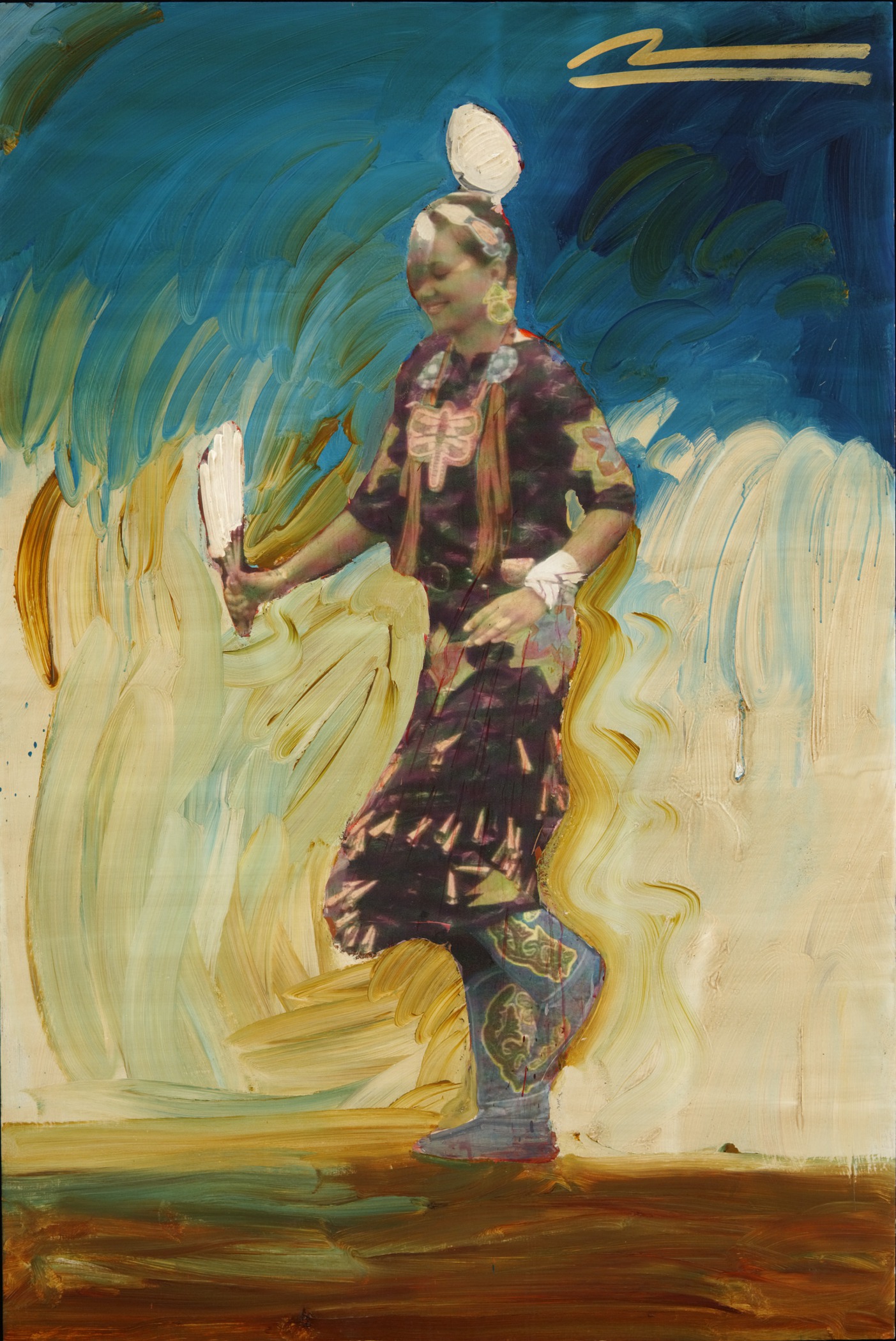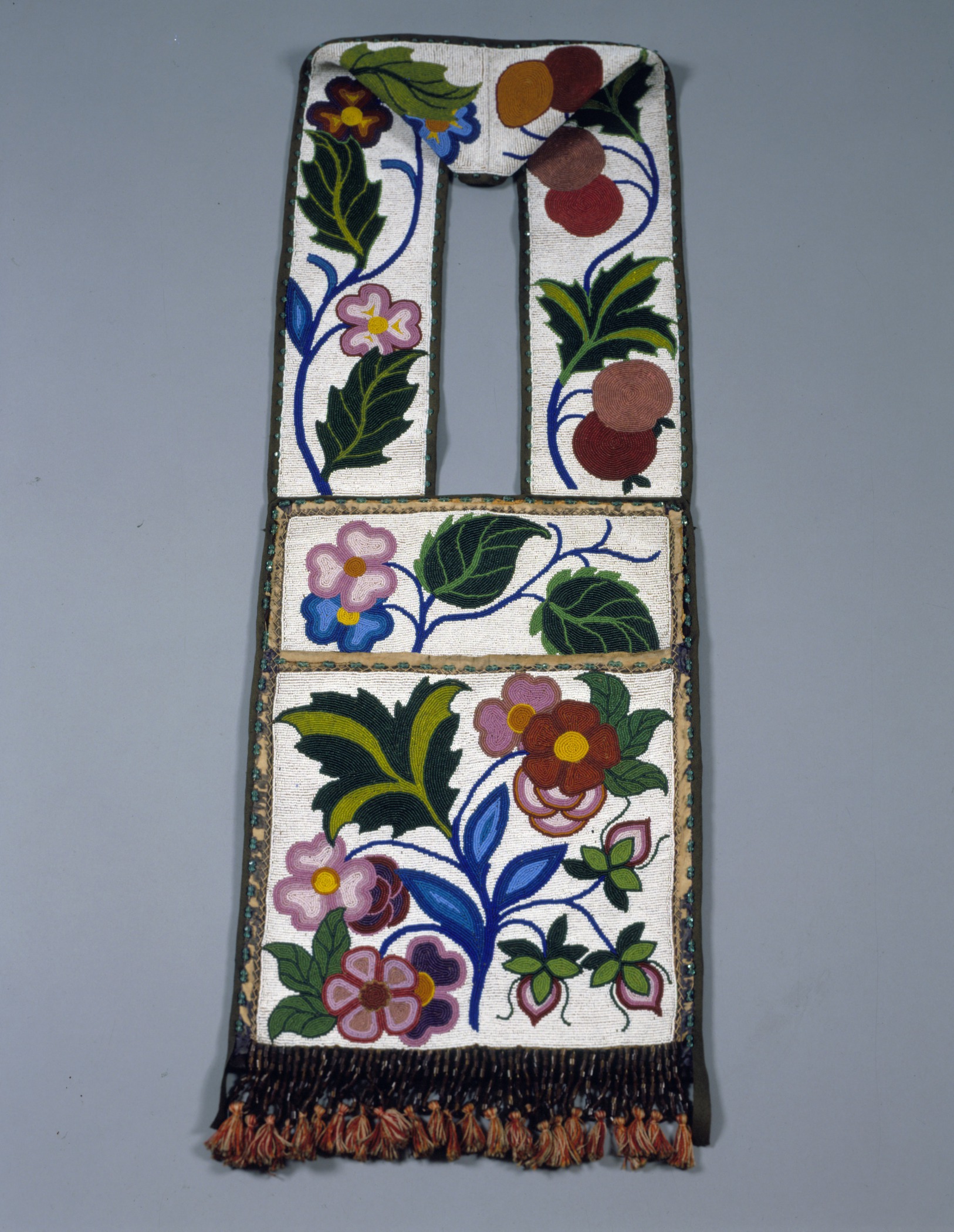Anishinaabe (Chippewa/Ojibwa)
Bandolier bag
- About 1900
- Glass trade beads, cotton cloth, and silk
- 44 7/8 × 14 3/16 in.
Hood Museum of Art, Dartmouth College: Bequest of Frank C. and Clara G. Churchill; 46.17.9872
visibilityLook & DiscussBandolier bags are heavily beaded shoulder bags made by women that complete the regalia, or ceremonial outfits, of men of the Great Lakes region of the Northeast Woodlands. They have a beaded strap that is worn diagonally across the chest so that the bag rests on the hip. Bandolier bags were inspired by the bags European-American soldiers wore to carry gun cartridges, but they are not actual bags. The tops do not have an opening. They are sewn shut and meant merely for show.
Explore the Object
Anishinaabe women made bandolier bags from trade goods—cloth, seed beads, and thread—beginning in the 1850s. They decorated them in one of two ways.
This floral bandolier bag was made about 1900 using a spot-stitch bead embroidery technique.
Spot stitching involves stringing seed beads onto a thread and laying the beaded thread down on the surface of a piece of cloth. The string is then tacked down in spots, usually every 3 to 4 beads. This technique allows the artist to fill a space quickly and make curving designs.
Potawatomi, bandolier bag, about 1890. Red trade cloth; cotton print; and white, green, black, red, pumpkin, and blue-gray glass beads, 33 7/16 × 12 3/16 in. Hood Museum of Art, Dartmouth College: Bequest of Frank C. and Clara G. Churchill; 46.17.9843.
Loom stitching involves weaving a horizontal line of beaded threads along the vertical threads of a wooden loom. The design grows as the weaver adds each string of beaded thread. Loom stitching results in more geometric, straight-edged patterns, like the design in this Potawatomi bandolier bag.
The shapes and patterns for both types of bandolier bags reflect the influence of European textiles, such as printed and embroidered floral fabrics and oriental carpets. However, they also feature design elements created by Woodlands people before the arrival of Europeans. Native bags and clothing, once embellished with moose hair and porcupine quills, also incorporate both geometric and floral patterns.
Activity: Sketching Bandolier Bags
Choose your favorite.
Print the bandolier bag outline and sketch your own design.
Does your bag have curvy, spot-stitched designs? Or geometric, loom-stitched designs?
learn more
Watch this video as A’aninin (ah-AH-ni-nin) Gros Ventre (Grow-VAUNT) scholar Joe Horsecapture discusses the exchange of ideas reflected in the embroidery and quill work of objects in the Hood Museum of Art’s collection.




